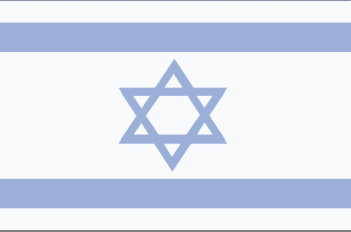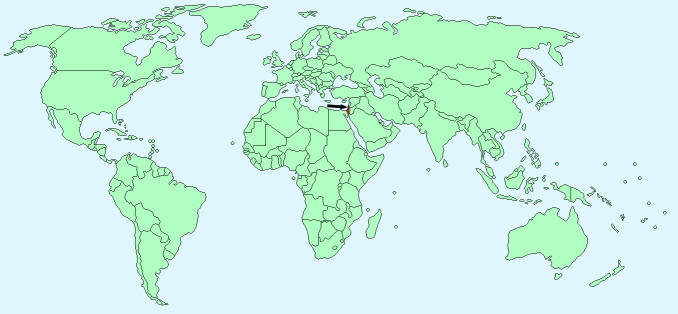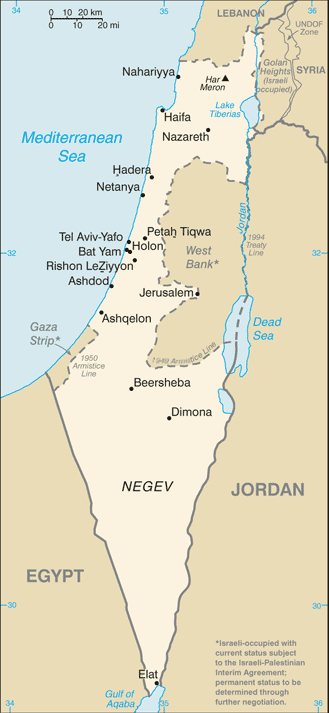Israel


Continent – Asia
Region – Western Asia/ Middle East
Size – 20,770 km²
Geography – coastal plain, central mountains, southern desert
Language – Hebrew, Arabic, English
Religion – Jewish 75.5%, Muslim 16.8%, Christian 2.1%, other 5.6%
Monetary Unit – Shekel
Natural Resources – timber, potash, copper ore, natural gas, phosphate rock, magnesium bromide, clays, sand
Agriculture – citrus, vegetables, cotton; beef, poultry, dairy products
Industry – electronics, wood and paper products, potash and phosphates, food, beverages, and tobacco, caustic soda, cement, construction, metals products, chemical products, plastics, diamond cutting, textiles, footwear

Neighbouring Countries – Lebanon, Syria, Jordan, West Bank, Gaza Strip, Egypt
Population – 7,821,850 (2014 estimate)
Population Growth Rate – 1.46%
Average Life Expectancy – 81.28
Capital City – Jerusalem (791,000)
Highest Mountain – Har Meron (1,208m)
Longest River – river Jordan (252 km)
Climate – Temperate cool and mild winters 6°C to 15°C, hot and dry summers 18°C to 30°C
Yearly Rainfall – 60 cm (approx) mostly in winter
Plant Life – vines, fig, olive, citrus trees, banana, advocado, palm, oak, broom, numerous wildflowers
Animal Life – jackal, hyena, wild boar, gazelle, fox, deer
Bird Life – many different species including, buzzard, pelican, starling, vultures
Harvard Reference for this page:
Heather Y Wheeler. (2015). Israel. Available: https://www.naturalhistoryonthenet.com/Facts_Figures/Country_Facts/israel.htm. Last accessed Monday, July 18, 2016
Facts and Figures Pages
